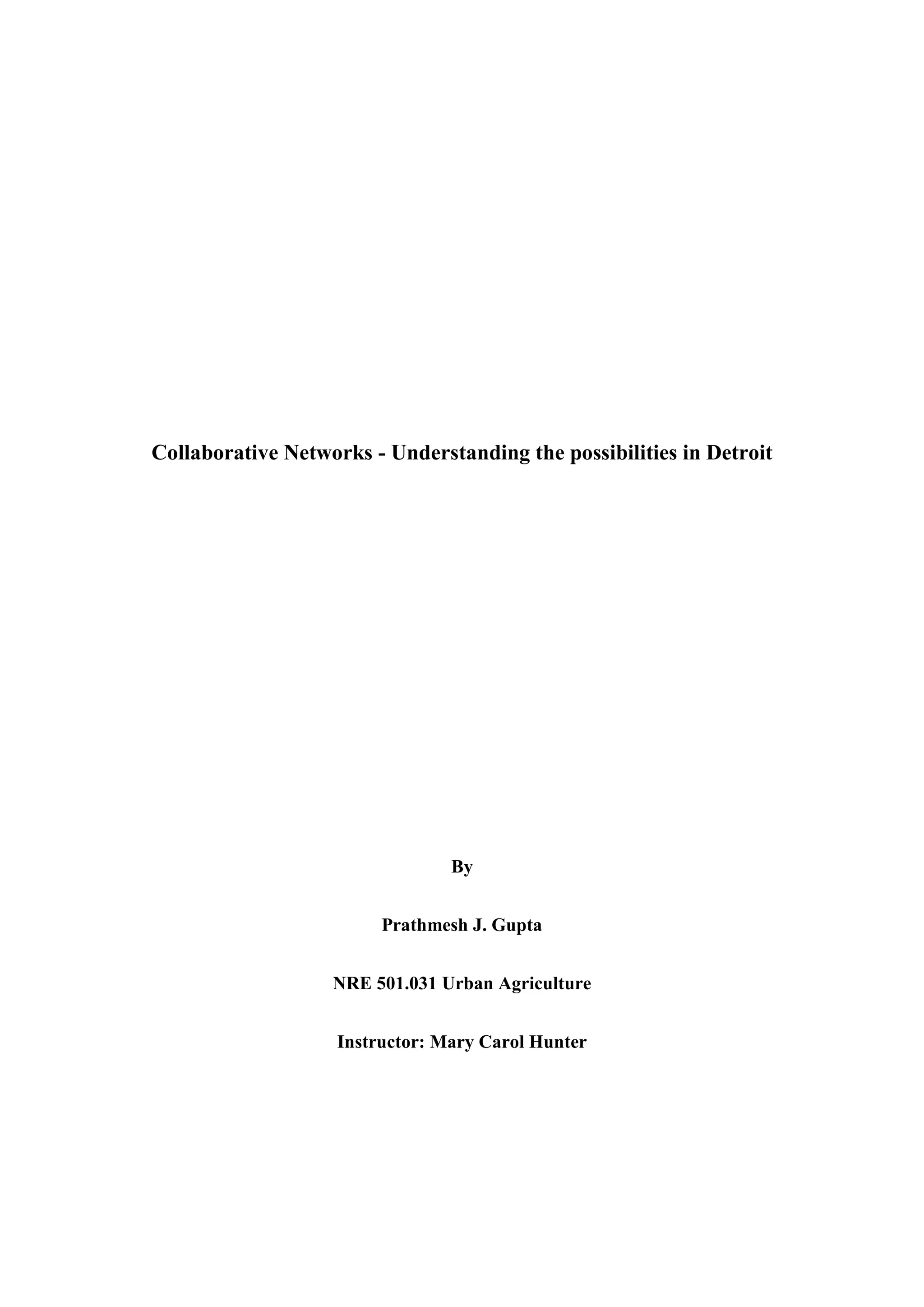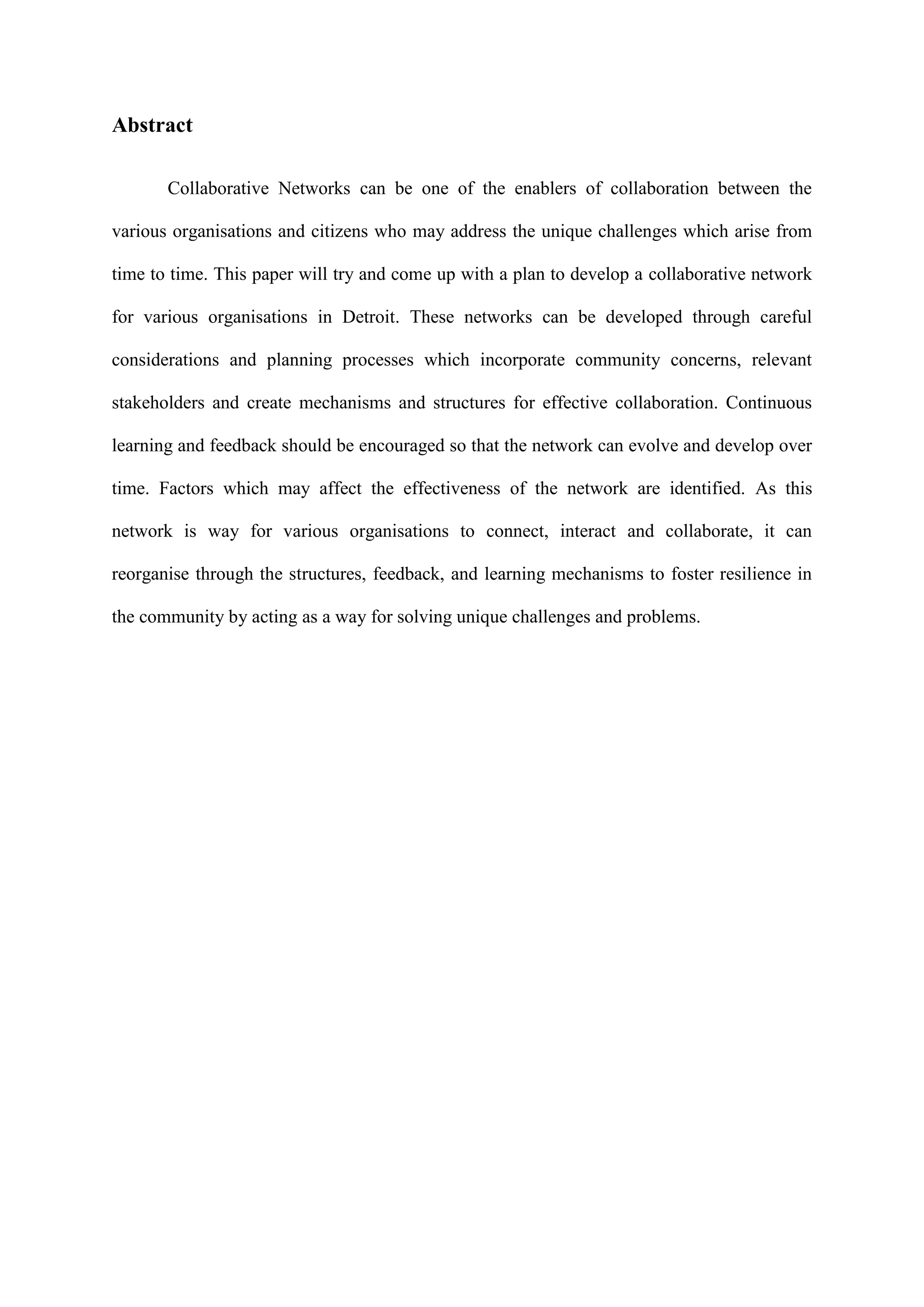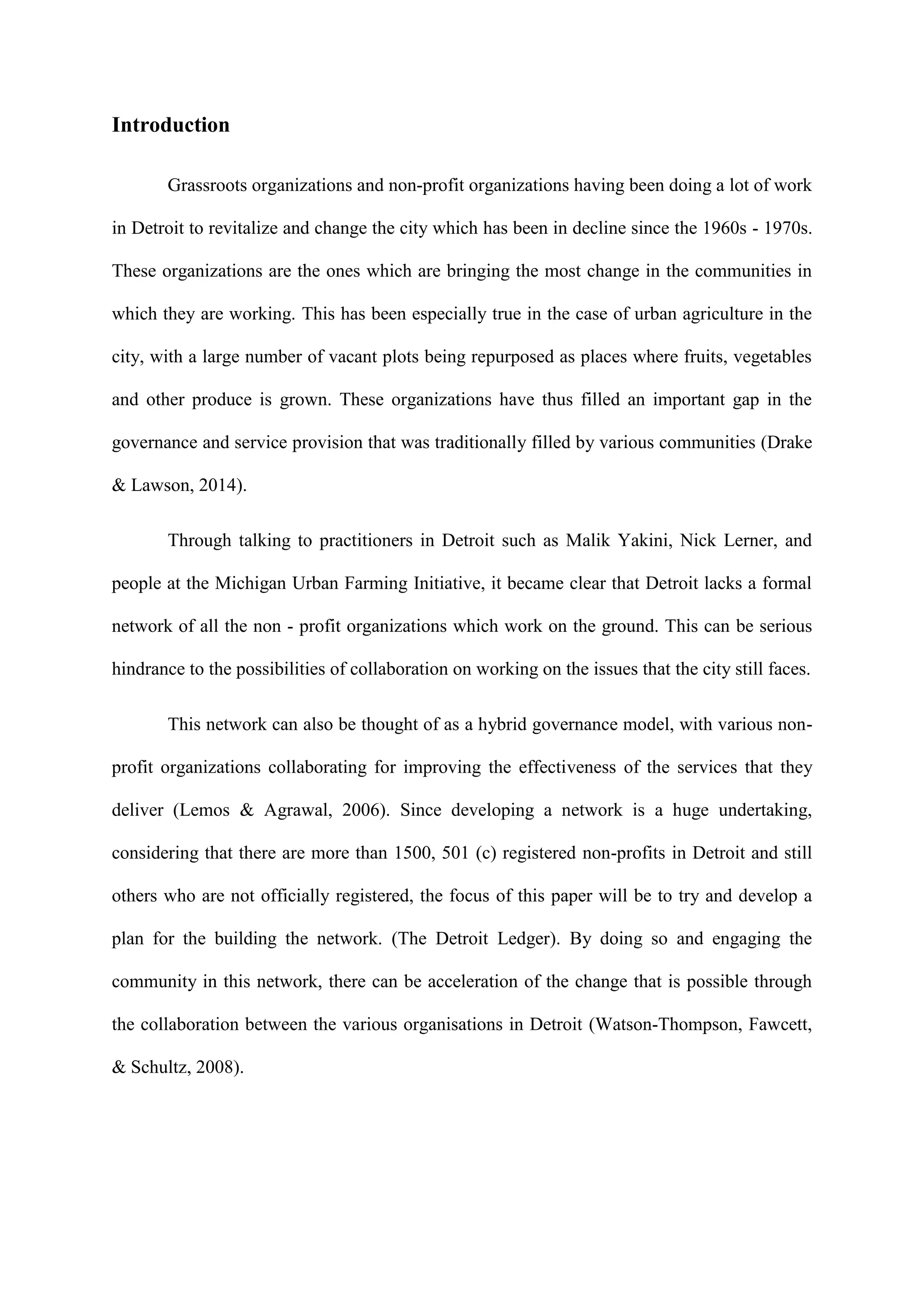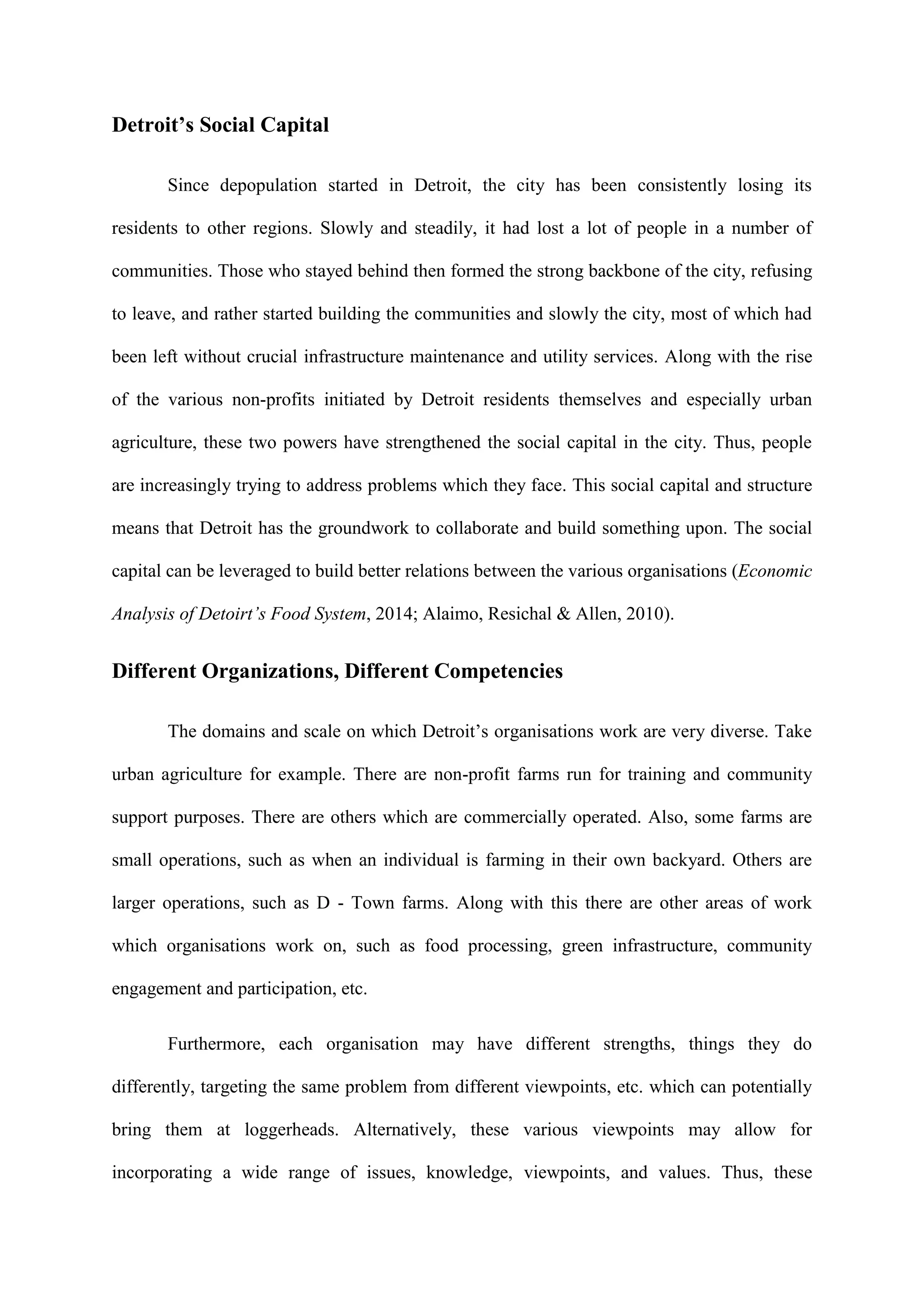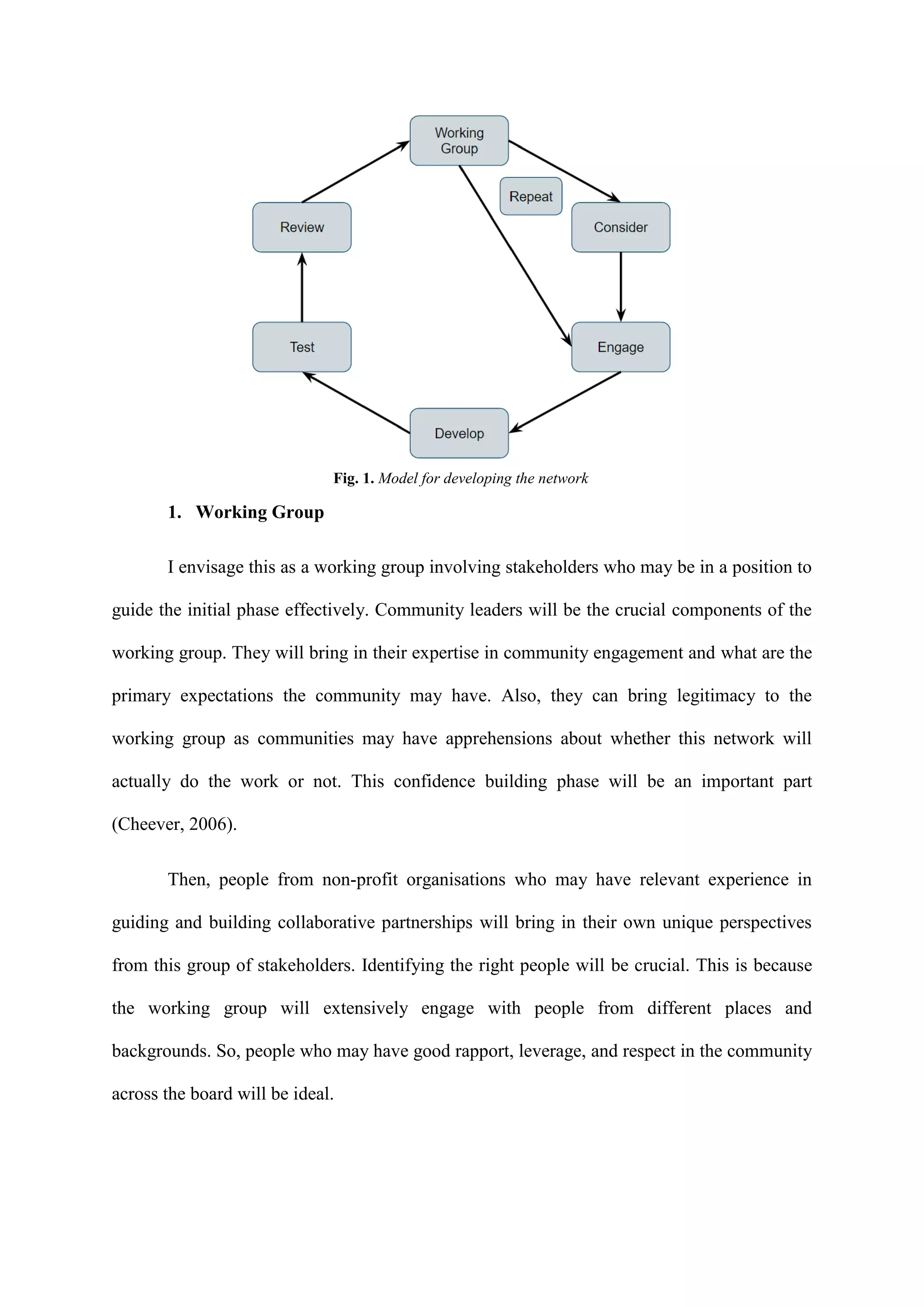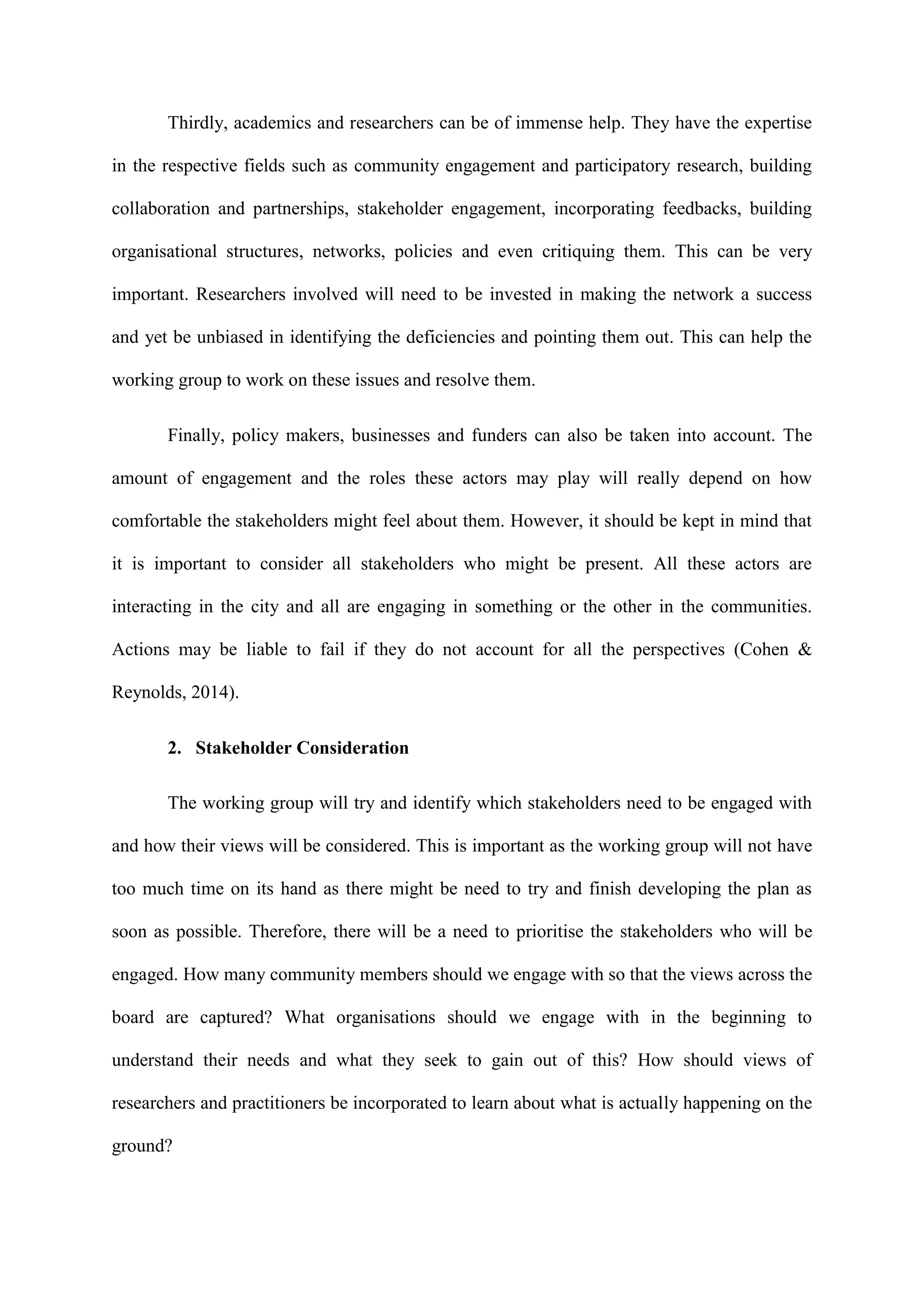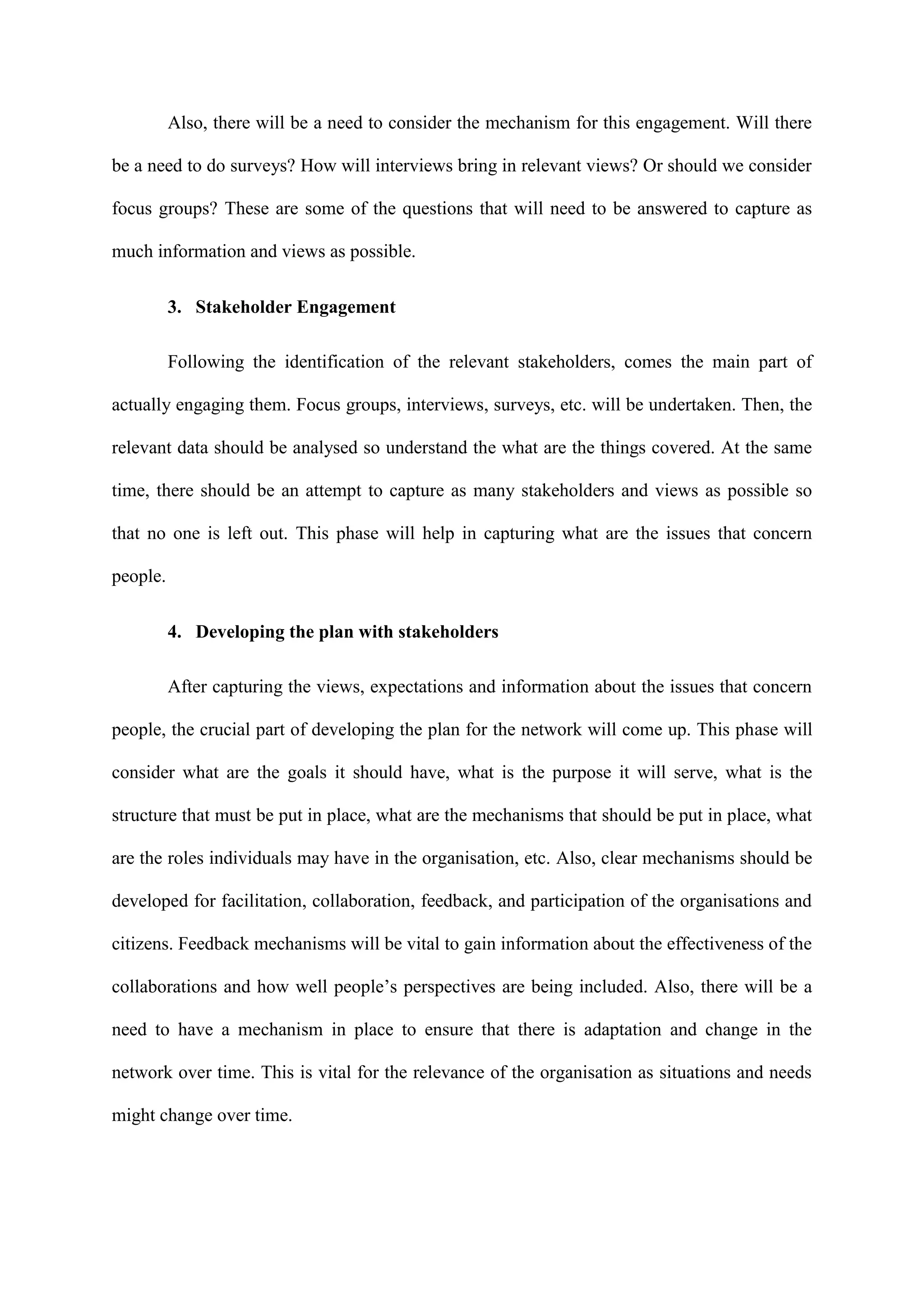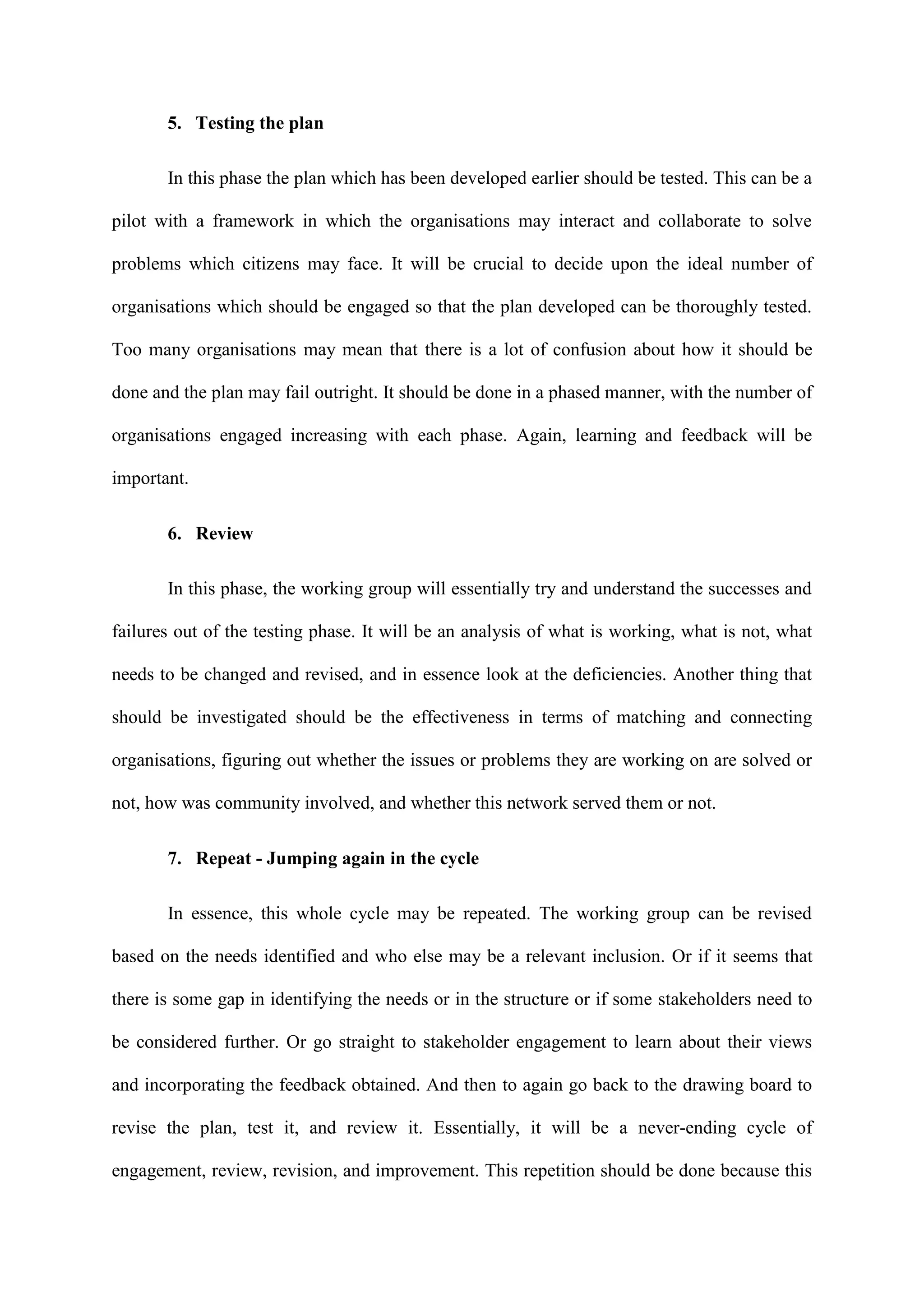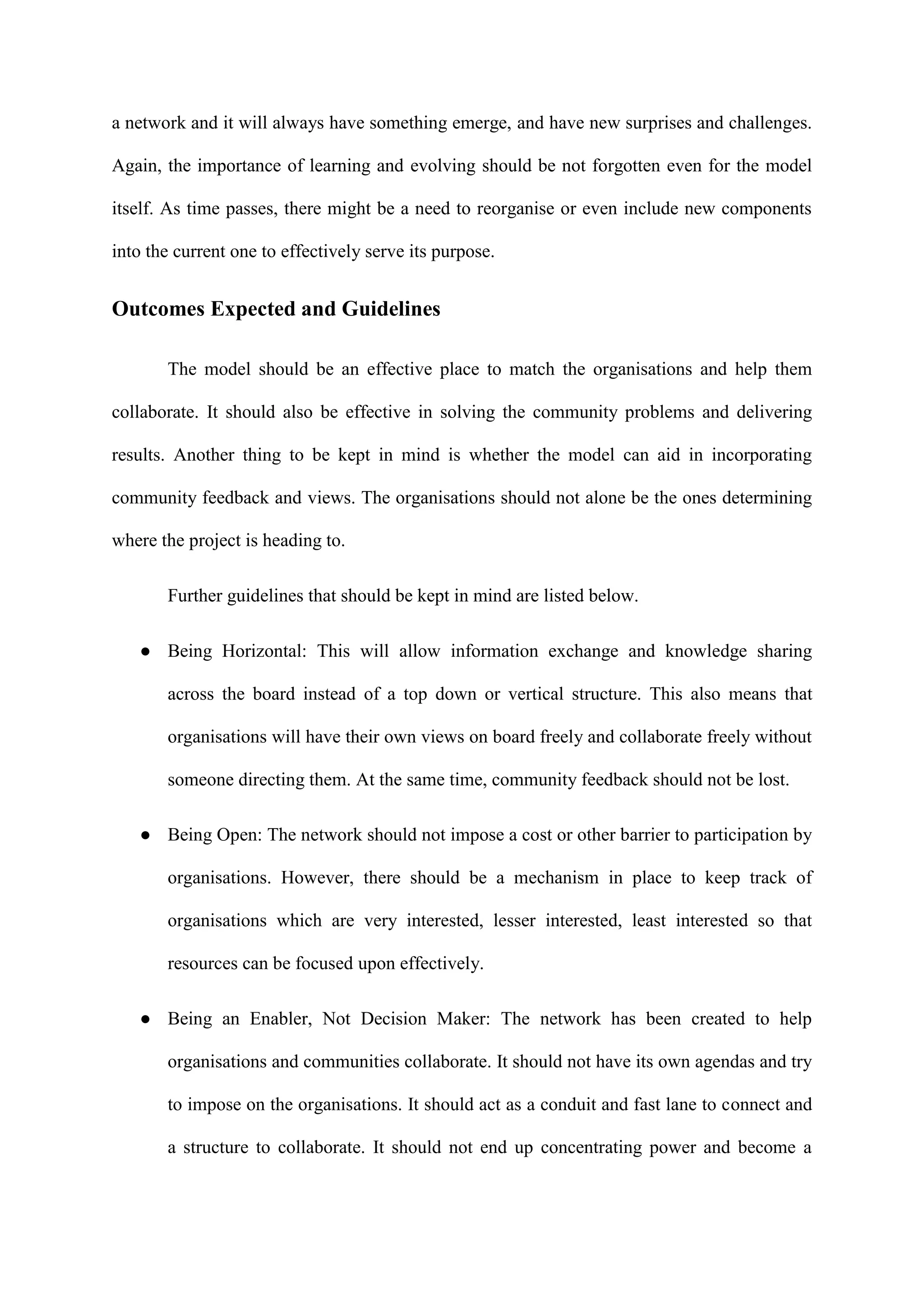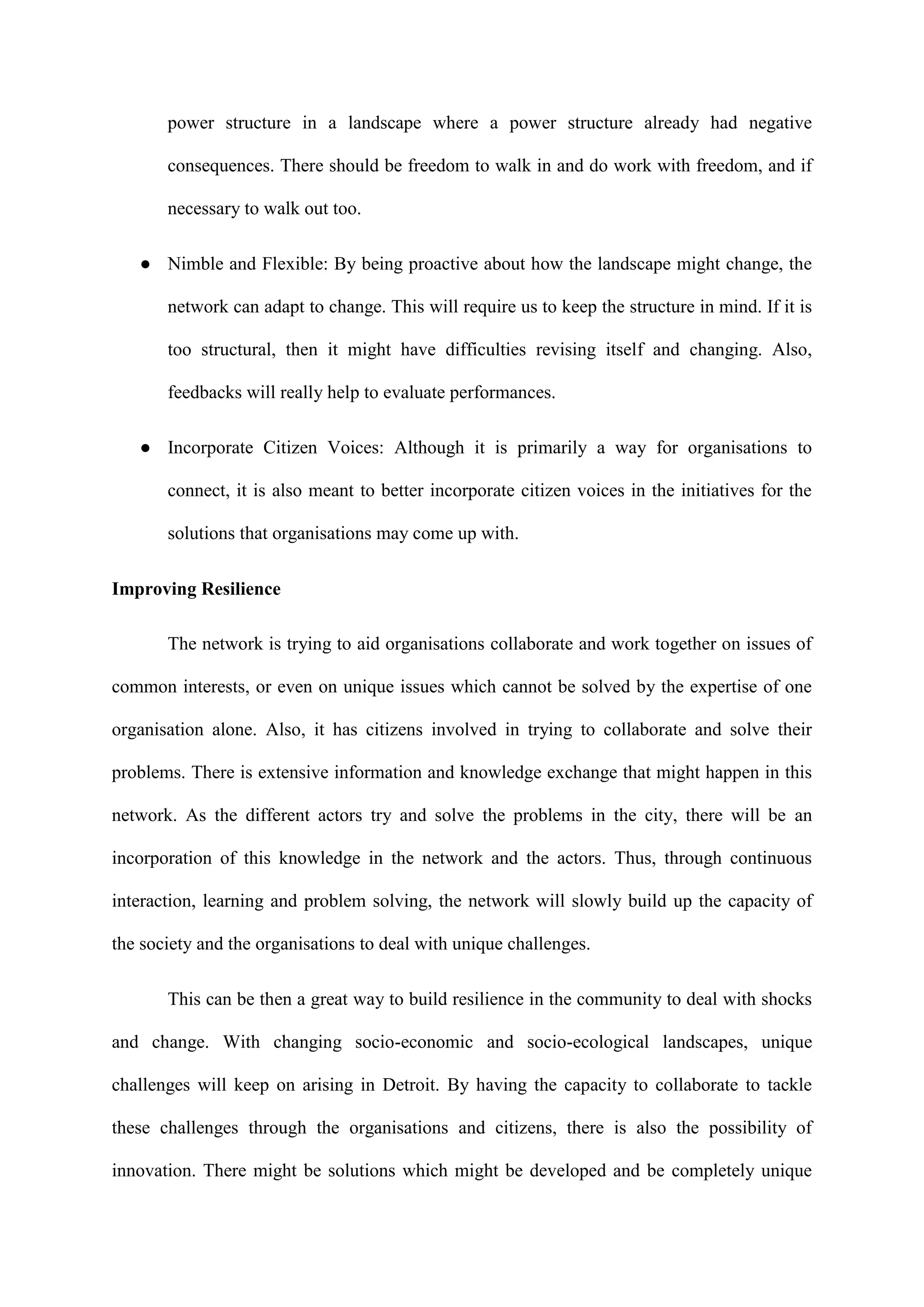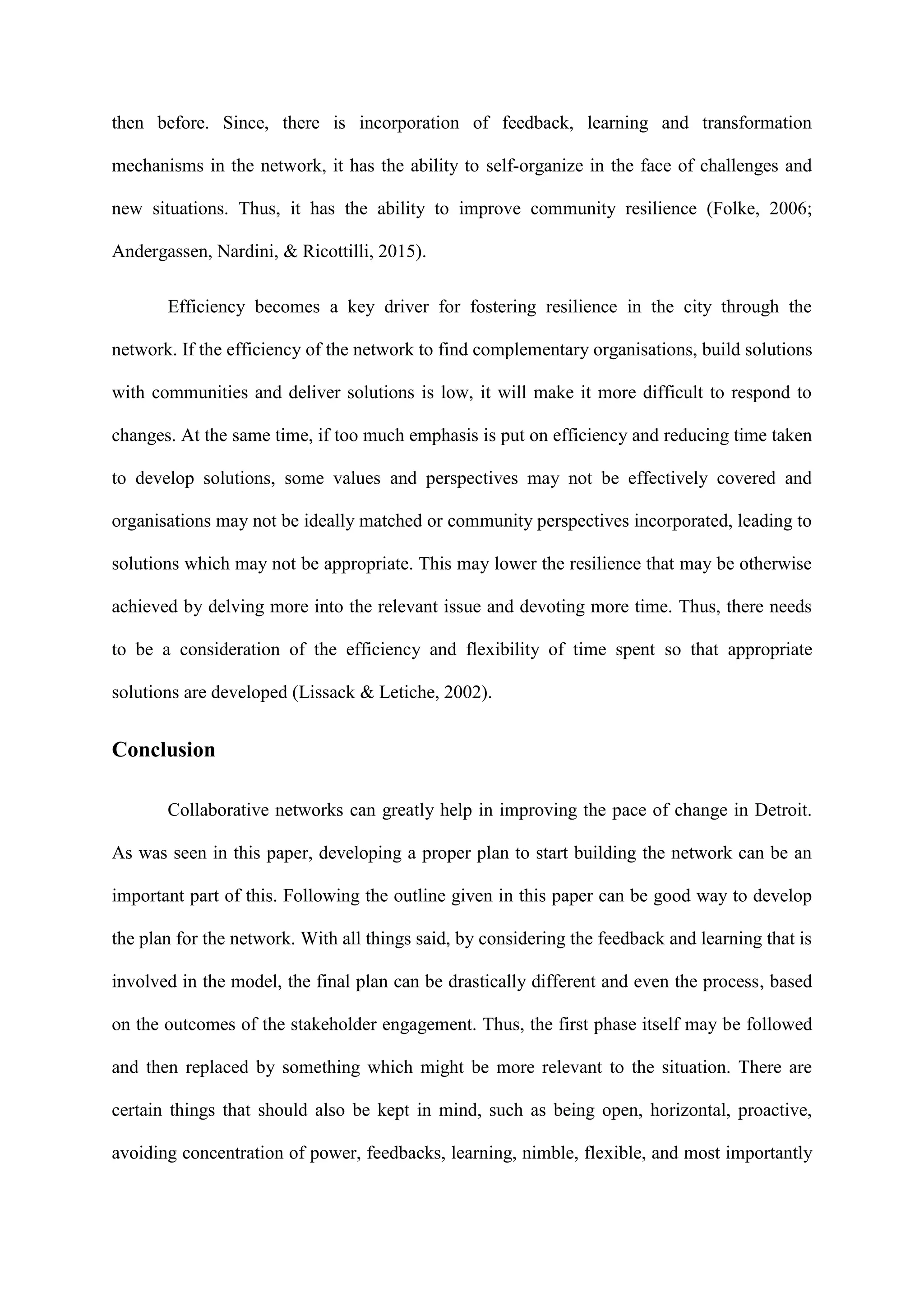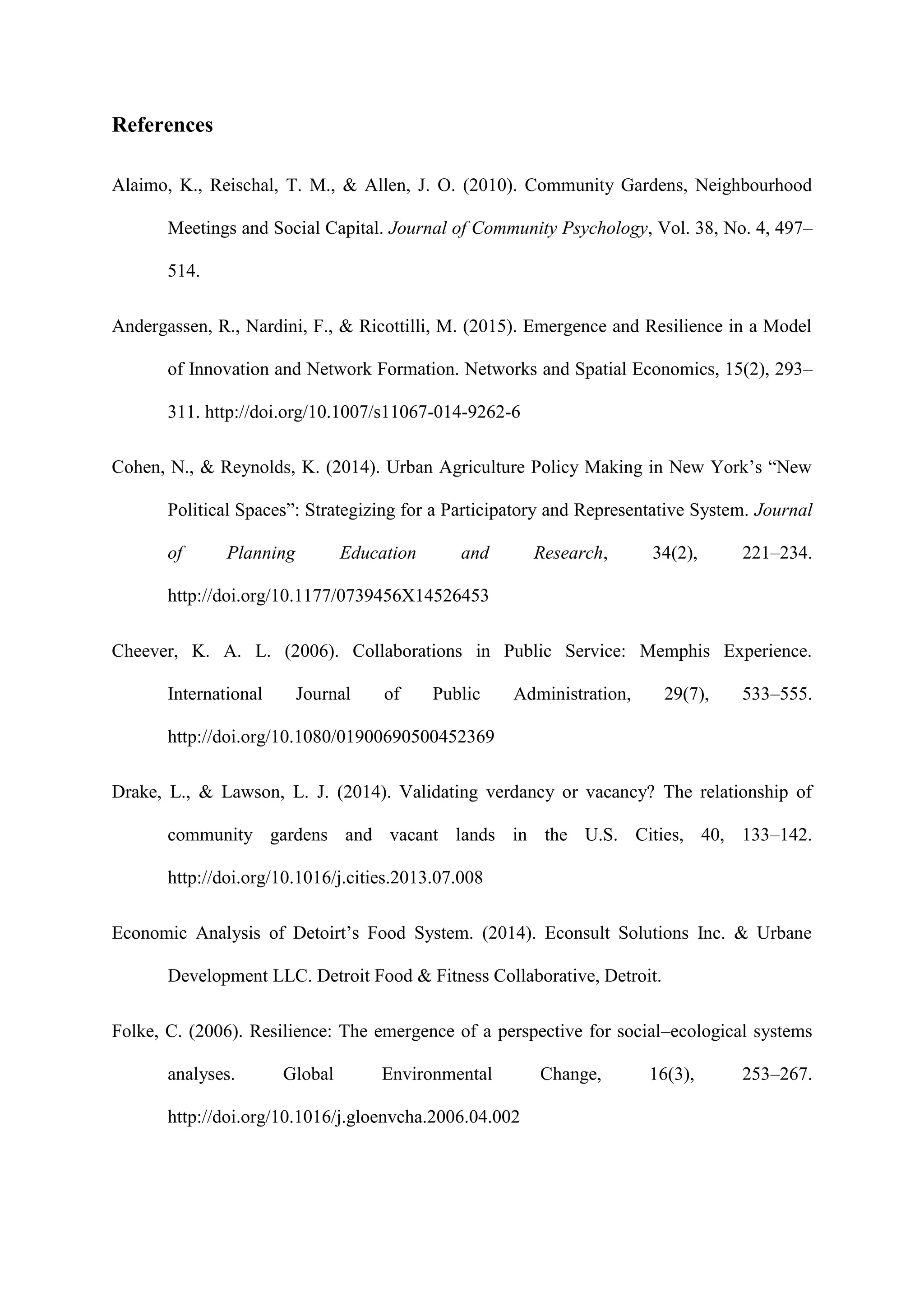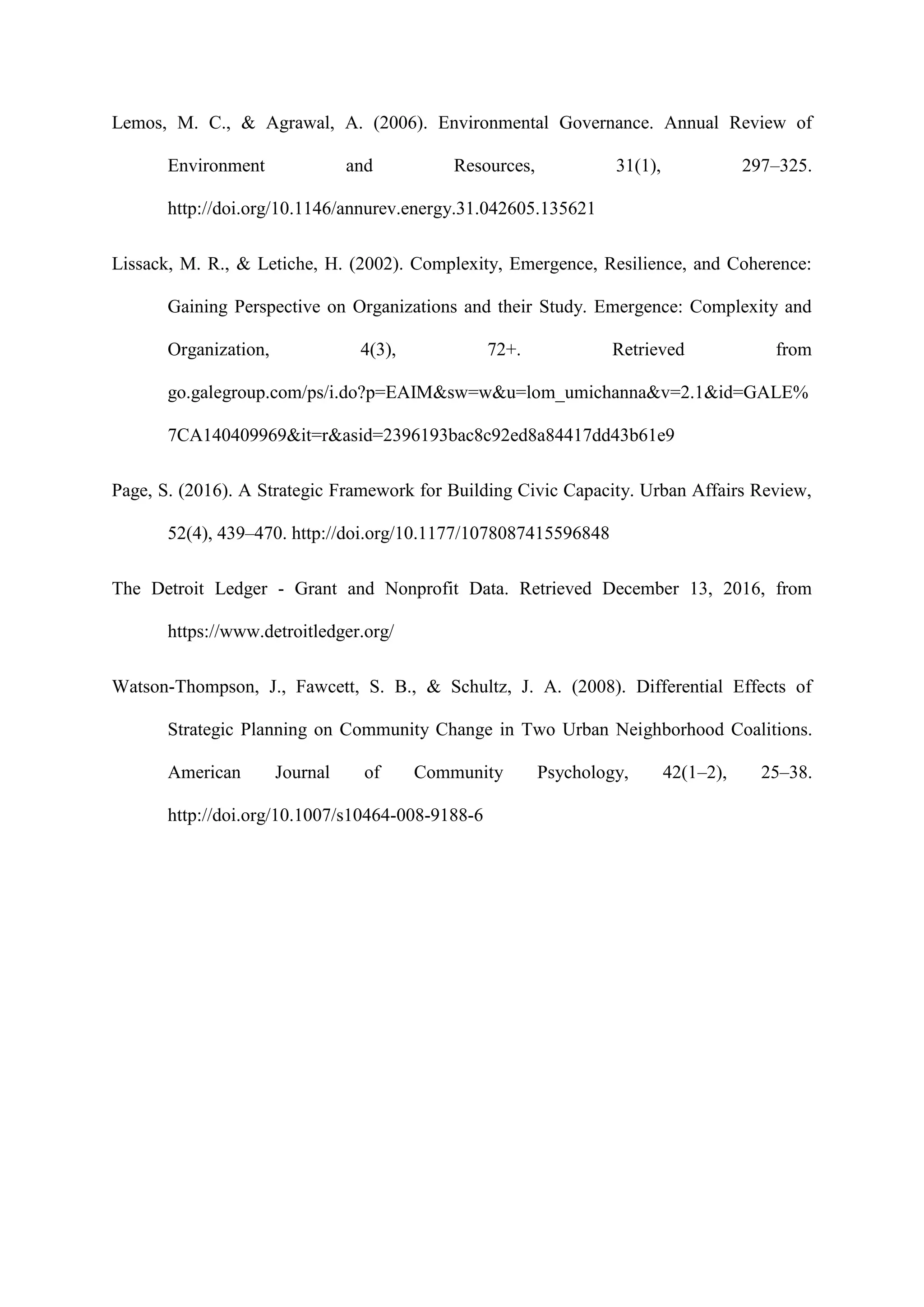This document proposes developing a collaborative network for organizations in Detroit to address challenges. It discusses:
1) Grassroots non-profits have been leading revitalization efforts but lack formal collaboration. A network could foster cooperation.
2) Detroit has strong social capital from engaged residents and non-profits. This provides a foundation to build relationships through a network.
3) A working group of stakeholders could guide initial network planning, ensuring community needs are met through diverse representation.
